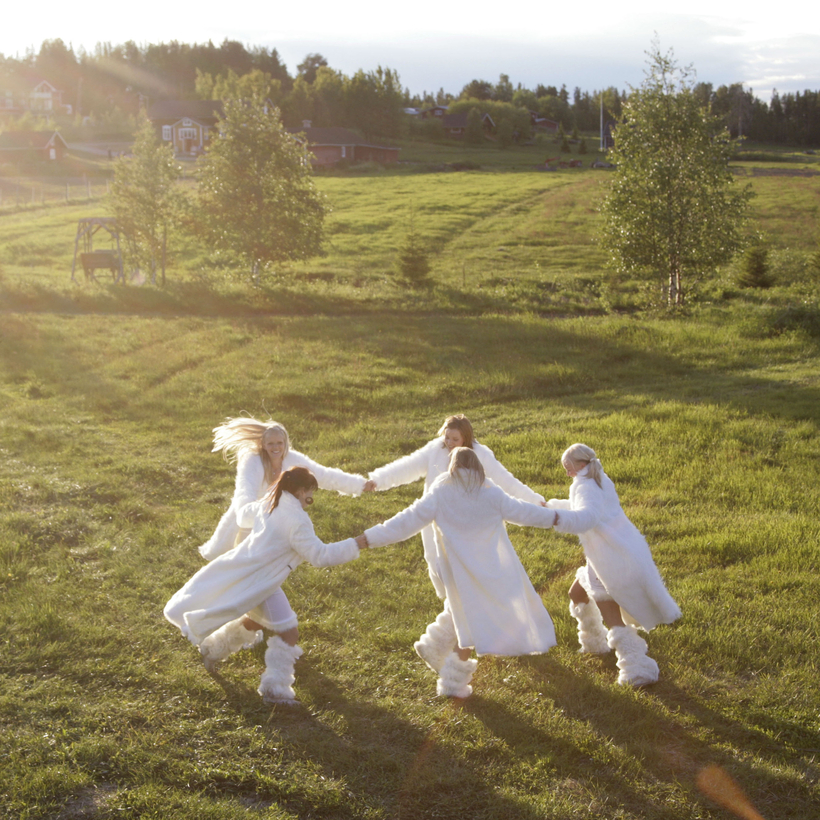What makes people happy? To answer that question, it would be very helpful to know which societies actually consider themselves significantly happier than others—and, since 2012, this is as easy as consulting the latest edition of the World Happiness Report, now published annually in New York by the United Nations Sustainable Development Solutions Network.
In 2019 (summing up data and surveys from 2016–18), Finland was the world’s happiest country for the second time in a row, followed by Denmark, Norway, and Iceland; the Netherlands and Switzerland came just ahead of Sweden, which means that the Nordic nations took five of the top seven spots. The top 10 were rounded out by New Zealand, Canada, and Austria. The second group of 10 started with Australia and ended with the Czech Republic: the UK was number 15, Germany number 17, and the US squeezed in at number 19.
This is what gets reported in the media, admiring the ever-happy Nordics and pointing out how America’s (badly distributed) riches cannot buy happiness.
What rarely gets reported is what actually goes into constructing these national scores: GDP per capita, social support (determined by asking if, when in trouble, people have relatives or friends to count on), healthy life expectancy (taken from the World Health Organization’s assessment of 100 different health factors), freedom to make life choices (scored by answering the question “Are you satisfied or dissatisfied with your freedom to choose what you do with your life?”), generosity (“Have you donated money to a charity in the past month?”), and perceptions of corruption (throughout the government and within business).
As with all indices, this one contains a mix of components, including: a notoriously questionable indicator (national GDP converted to US dollars); answers that cannot be easily compared across cultures (perception of freedom to choose); and scores based on objective and revealing variables (healthy life expectancy). This mélange alone indicates that there should be a great deal of skepticism regarding any precise ranking—and this feeling is mightily reinforced when one looks closely at what never gets reported in the media: the actual country scores (accurate to the third decimal digit!).
By coincidence, in 2019 I lectured in all of the world’s three happiest countries—but, obviously, I was not able to notice that the Finns (7.769) are 2.2 percent happier than the Danes (7.600), who in turn are 0.6 percent happier than the Norwegians.
In 2019, Finland was the world’s happiest country for the second time in a row, followed by Denmark, Norway, and Iceland.
The absurdity of all of this is obvious. Even ninth-place Canada has a combined score that is just 6.3 percent lower than Finland’s. Given all the inherent uncertainties regarding the constituent variables and their simplistic, unweighted addition, would it not be more accurate, more honest (and, of course, less worthy of media attention), to at least round the scores to the nearest unit—or, better yet, do no individual ranking and just say which 10 or 20 countries make up the top group?
And then there is that remarkable lack of correlation between happiness and suicide—plotting the two variables for all European countries shows a complete absence of a relationship. Indeed, some of the happiest countries have relatively high suicide rates, and some rather unhappy places have a very low frequency of suicide.
But what, besides being Nordic and rich, makes people happy? Fascinating clues are provided by countries whose ranking appears out of place. That Afghanistan, the Central African Republic, and South Sudan are the three least happy countries of the 156 ranked nations is, sadly, quite expected (civil wars have been destroying them for far too long). But 23rd-place Mexico (a narco state with an extraordinarily high rate of violence and murder) ahead of France? Guatemala ahead of Saudi Arabia? Panama ahead of Italy? Colombia ahead of Kuwait? Argentina ahead of Japan? And Ecuador ahead of South Korea?
Clearly, these pairs form a remarkable pattern: their second members are richer (often vastly so), more stable, less violent, and offer a considerably easier life than the first countries of every pair, whose commonalities are obvious—they may be relatively poor, troubled, and even violent, but they are all former Spanish colonies and hence overwhelmingly Catholic.
And all of them are in the top 50 (Ecuador is in the 50th spot), well ahead of Japan (58) and far ahead of China (93), the country that has been seen by naive Westerners as a veritable economic paradise full of happy shoppers. But while Louis Vuitton may be making a bundle in China, neither the massive malls nor the leadership of the all-knowing party make the Chinese happy; even the citizens of dysfunctional and much poorer Nigeria (85) feel happier.
The lessons are clear: if you cannot fit into the top 10 (not being Nordic, Dutch, Swiss, Kiwi, or Canadian), convert to Catholicism and start learning castellano. ¡Buena suerte con eso!
Vaclav Smil is a scientist, policy analyst, and the author of several books, including Growth: From Microorganisms to Megacities and, most recently, Numbers Don’t Lie: 71 Stories to Help Us Understand the Modern World

